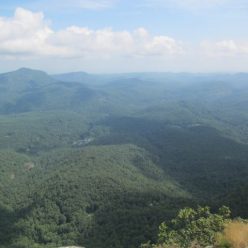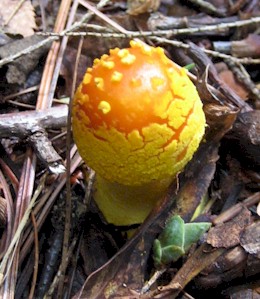This hike follows the less popular trail from the Margarette Falls trail head near Bethany, Tennessee in Cherokee NF.

The half mile gravel road that leads in from the parking lot to the trailheads has a high salt content in places and attracts butterflies. These are pipevine swallowtails.
The Phillips Hollow trail is dark blue blazed and leads across dry creek and up along the north bank. Ultimately, this trail leads all the way up to the A.T. at the top of the ridge which is a very strenuous hike. In the lower portions, to say that there are a few waterfalls might be an understatement.
At the first major stream crossing, a light blue blazed trail leads south across the stream and then winds up the valley with Dry Creek. This would be the same Dry Creek (still poorly named) that Margarette Falls in on, although a different branch. This trail is not listed on our map of Cherokee National Forest and the Cherokee NF website is more or less useless when it comes to trail identification. Instead your best bet are some rocks at the trail junction which have been painted with names and arrows. The trail up Dry Creek is identified on the rocks as Shoot Creek for reasons we can’t possibly explain. Either way the further you go up this trail, the more impressive the waterfalls get and the more difficult the path becomes. About 0.3 miles in, the trail crosses Dry Creek between ledge falls.
There are plenty of good swimming holes along the way. In fact, in several places it’s a lot easier to walk up the stream than it is to follow the trail over and around rhododendrons. Somewhere along the way is Spruce Thicket Falls, which seems to be the only named falls. We’re not sure which one it is but there is a 35 foot series of cascades about .6 miles in. Above this, it becomes really difficult to travel further upstream.
Melanie became fascinated with the wide range of mushrooms along the way and might eventually put up a gallery of images on the site. In the meantime, we’re mostly certain (after some time with the mushroom field guide) that this is a Yellow Patches. If it isn’t, some mycologist out there can correct us.




